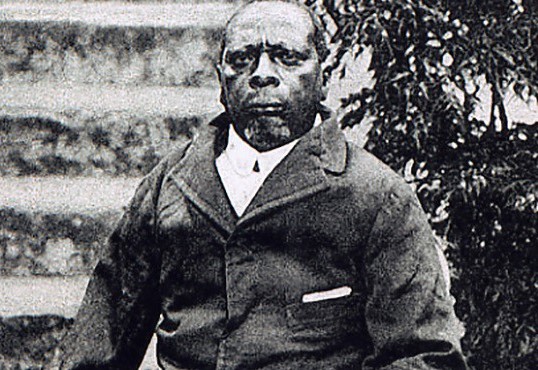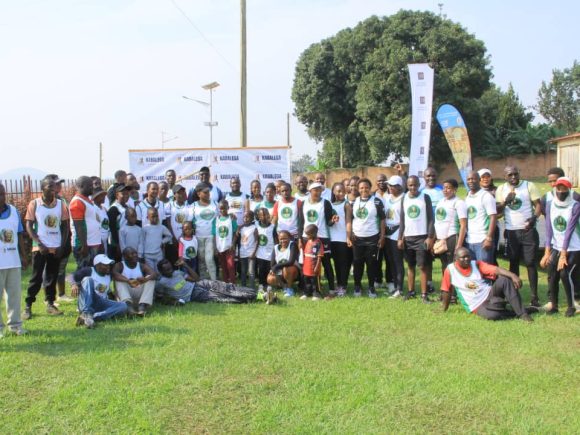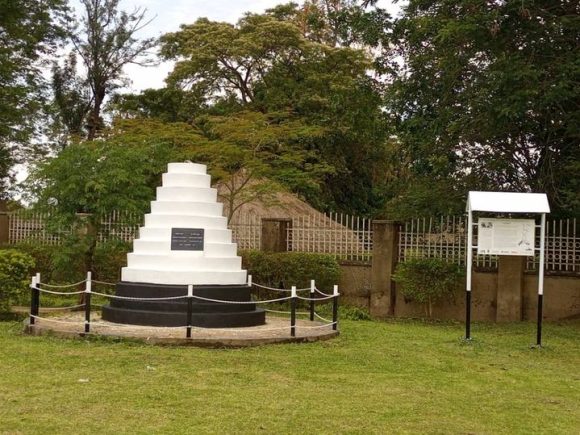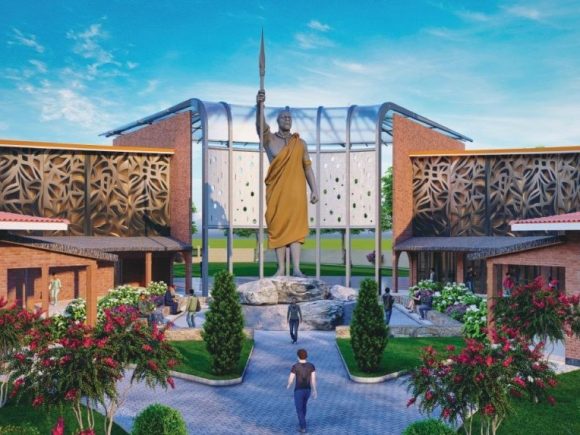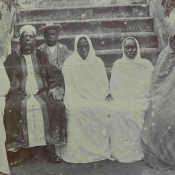
A cross-section of panelists, moderator, and keynote address speaker at the 2nd Kabalega Memorial Lecture at Hoima Resort Hotel in Hoima City, held 03rd October 2025. From left to right; Dr. Evelyn Cindy Magara (Lecture Moderator), Owek. David A.F Mpanga (panelist), Dr. Leonard Nkalubo (panelist), Ms. Nancy Linda Kalembe (panelist), Prof. Julius Kiiza (Keynote Address Speaker), and Mr. Innocent Turyahikayo (panelist, and youth representative)
October 2–4, 2025 | Hoima City.
Held in Hoima City — the cultural heart of the Bunyoro-Kitara Kingdom — Kabalega Independence Week 2025 was a three-day celebration that brought together history, innovation, leadership, and community spirit in honor of Omukama Cwa II Kabalega. Known for his unmatched courage and transformative leadership during the colonial resistance, Kabalega’s legacy was not just remembered — it was reawakened through dialogue, innovation showcases, and vibrant cultural experiences.

An exhibitor showcasing their products at the Kabalega Business & Innovation Expo 2025
Under the theme “Celebrating Culture, Spurring Innovation & Community Transformation” the week was organized by Kabalega Foundation in partnership with the Bunyoro-Kitara Kingdom, Konrad Adenauer Stiftung (KAS Uganda), and Hoima City, and a diverse group of over 30 partners spanning academia, government, civil society, media, and the private sector. This year’s commemoration went far beyond ritual remembrance — it was a platform for empowering new ideas, elevating indigenous knowledge, and mobilizing communities to reimagine the future together.

Some of the youthful runners who took to the streets to participate in the Kabalega Independence Run 2025.
PART I: KABALEGA BUSINESS & INNOVATION EXPO 2025 — A PLAFORM FOR EMPOWERING BUSINESSES, IDEAS & INNOVATIONS
From Thursday, October 2nd, Rukurato Grounds in Hoima City transformed into a bustling arena of trade, ideas, and cultural expression as the Kabalega Business and Innovation Expo officially opened. This three-day fair aimed to promote local enterprise, youth innovation, and cultural creativity, while also serving as a public interface for health education, financial literacy, and community engagement. Attendees, from small-scale vendors and artisans to large corporates — found common ground in showcasing what community-driven innovation could look like.
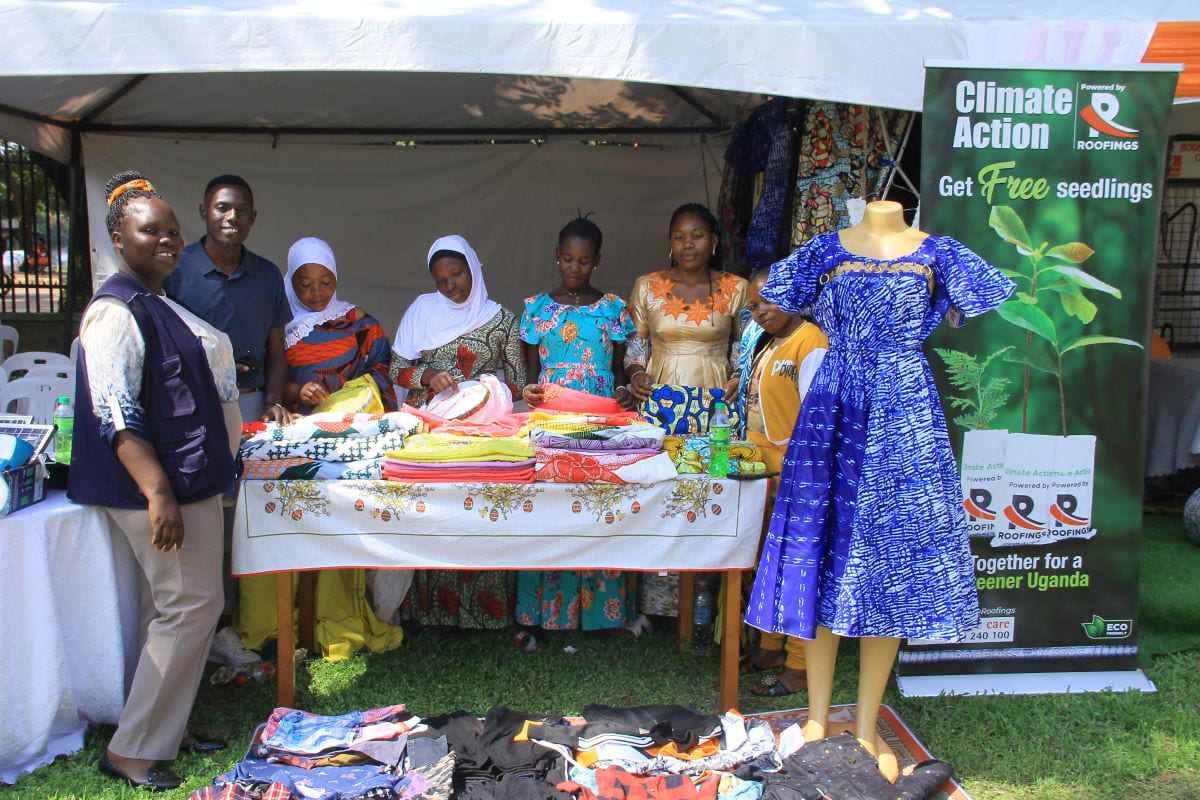
A cross-section of members of the refugee community from Kyangwali resettlement camp showcasing their handcrafts and products, supported by UNHCR
Over 30 exhibitors set up booths at the expo, representing a wide spectrum of sectors. Youth-led startups displayed their solutions addressing agriculture, health, sanitation, and education. Cultural artisans presented traditional crafts, herbal products, and memorabilia that drew attention to Bunyoro’s vibrant heritage.
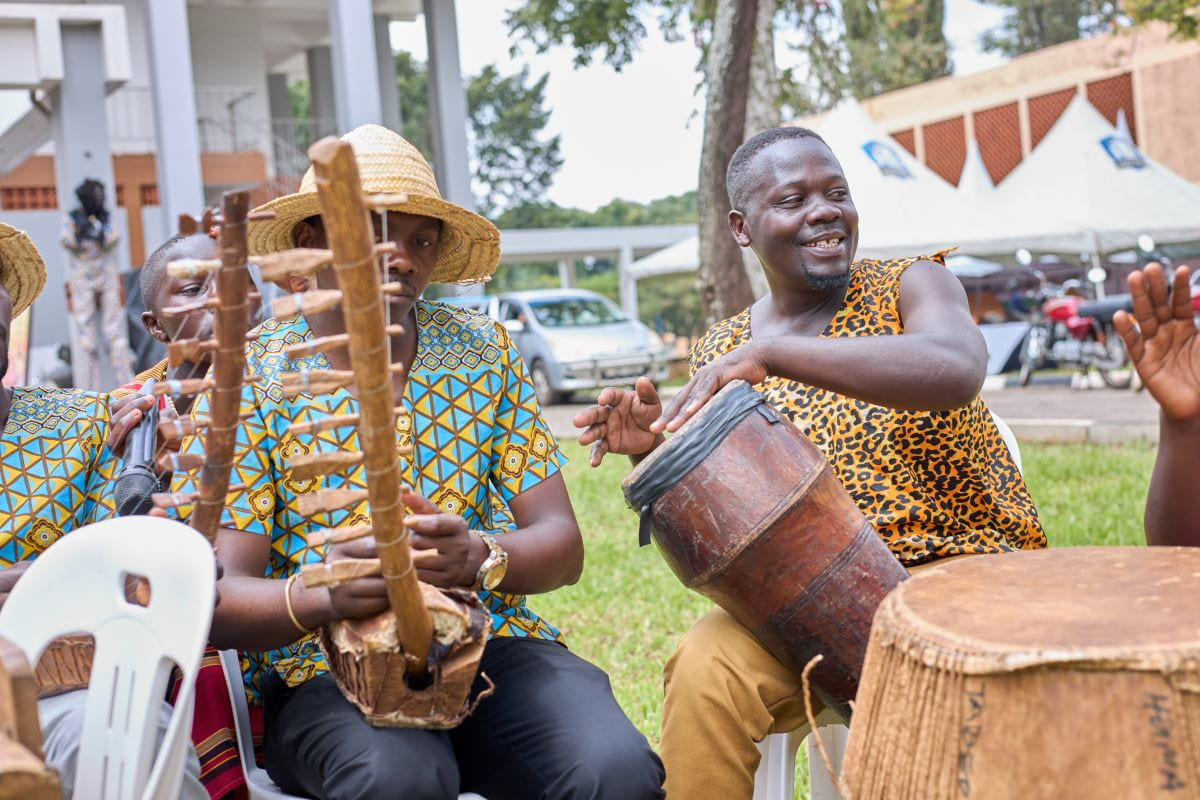
Members of the cultural dance troupe entertain the audience at the Expo
Corporate sponsors like Roofings Uganda, Centenary Bank, Pepsi Uganda, Jibu Water, and Roke Telkom activated their own branded spaces, offering product demos, giveaways, and interactive sessions that created both buzz and foot traffic.
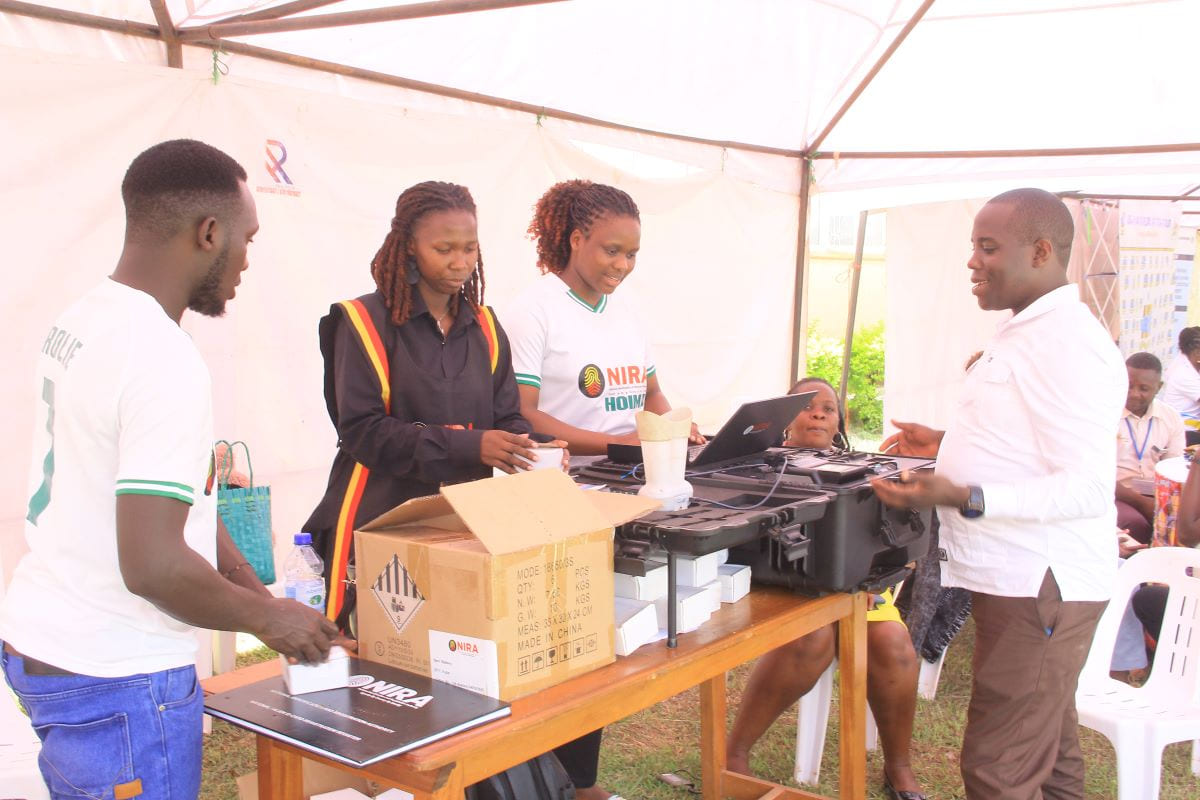
NIRA staff were on site to support members of the public on ID registration, renewal, and picking services.
Prominent government parastatal institutions and organizations also showcased their services in a way that added real-time value to attendees. Konrad Adenauer Stiftung (KAS) facilitated civic education and dialogue around governance and digital citizenship, through multimedia display and information sharing. National Identification Registration Authority (NIRA) helped attendees access on-site national ID services. Uganda Business Registration Services (URSB) supported the community with on-site real-time business registration services, while Uganda Bureau of Statistics (UBOS) engaged the public in data and statistics literacy, as well as national census awareness.

URSB staff supporting one of the expo goers on business registration services.
In parallel, the Community Health Pavilion, organized by the Uganda Red Cross, Medical Teams, City Medicals, and UBTS, offered a full range of free services including HIV testing, general check-ups, counseling, and blood donation. The integrated approach — health and enterprise, culture and commerce — made the expo a true expression of holistic development.
Read full story here: https://kabalegafoundation.org/2025/10/06/kabalega-business-innovation-expo-2025-where-culture-met-commerce/
See photo gallery here: https://kabalegafoundation.org/photo-gallery/kabalega-business-innovation-expo-2025/
PART II: THE 2ND KABALEGA MEMORIAL LECTURE – A REFLECTION ON LEADERSHIP FOR COMMUNITY TRANSFORMATION.
The intellectual high point of the week arrived on Friday, October 3rd at the Bunyoro Convention Hall, Hoima Resort Hotel, where the 2nd Kabalega Memorial Lecture convened an esteemed assembly of cultural leaders, scholars, policymakers, youth activists, and development experts. The event built upon the success of the inaugural lecture held in 2023, and this year’s theme — “Culture, Knowledge & Innovation: Reimagining Leadership for Community Transformation” — set the tone for a deeply engaging and reflective dialogue.
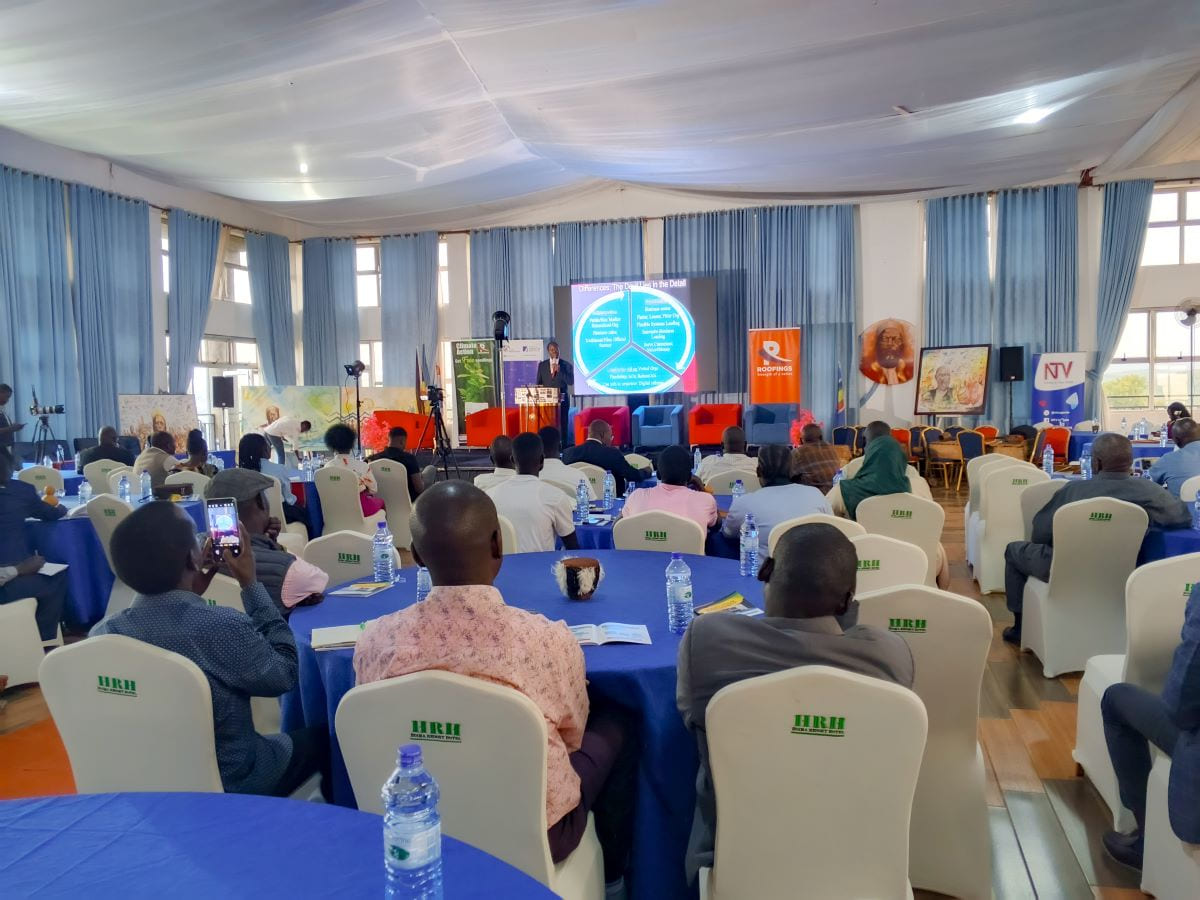
The audience listening in to the Keynote Address by Prof. Julius Kiiza at Hoima Resort Hotel
Key remarks were delivered by representatives from Kabalega Foundation, Konrad Adenauer Stiftung, and the Bunyoro-Kitara Kingdom, who emphasized the growing importance of reclaiming African heritage as a resource for governance, education, and innovation. They collectively underscored the fact that Uganda, and Africa at large, must look inward — to its cultures and communities — for solutions to modern challenges.

Mr. Bernard Mukhone, the Programme Manager – Konrad Adenauer Stiftung Uganda & South Sudan, representing the Country Director at the lecture, delivering his remarks.
The keynote address, delivered by Professor Julius Kiiza, offered an eloquent and thought-provoking examination of Africa’s leadership dilemmas and possibilities. He called on Ugandans to reimagine leadership not just in terms of political authority, but as a value-based, community-anchored ethic that elevates the collective good. Drawing from historical figures like Kabalega and modern challenges such as digital inequality, Prof. Kiiza made a compelling case for a leadership model grounded in cultural identity, indigenous knowledge systems, and technological adaptation.

Prof. Julius Kiiza delivering the Keynote Address Speech at the 2nd Kabalega Memorial Lecture.
Following the keynote was a robust intergenerational panel dialogue, moderated to reflect depth and inclusivity. Moderated by Dr. Cindy Evelyn Magara, participants included Owek. David Mpanga, a senior minister in the Buganda Kingdom Cabinet, who also represented the Prime Minister of Buganda Kingdom, and who shared insights on how cultural institutions can support national governance without losing their authenticity.

Owek. David Mpanga from Buganda Kingdom, and official representative of the Prime Minister of Buganda Kingdom at the 2nd Kabalega Memorial Lecture sharing thoughts on integration of culture in governance systems during the panel discussion.
Ms. Nancy Kalembe, former presidential aspirant, offered bold reflections on leadership, and the resilience of women in public life. Youth social activist, and aspiring political leader Innocent Turyahikayo spoke passionately about the expectations of young Ugandans and the need for accountability and innovation in politics. Dr. Lenard Nalubo, a mathematician and AI expert, added a futuristic layer to the conversation, highlighting the power of artificial intelligence and data science when localized to serve community needs.
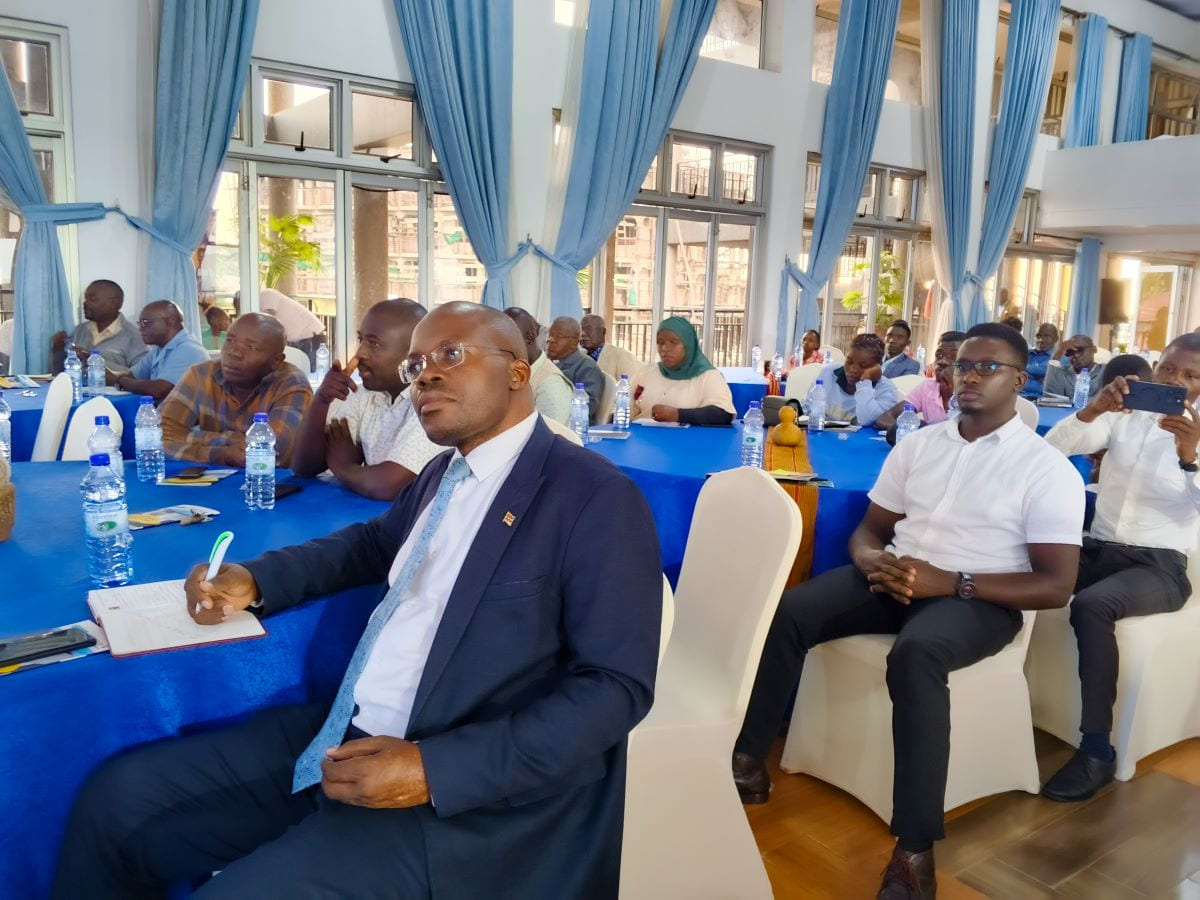
Cultural performances — strategically interwoven throughout the programme — reminded attendees of the spiritual and emotional depth that culture brings to leadership. Traditional dance troupes offered symbolic performances celebrating unity, identity, and resistance, echoing the legacy of Kabalega himself.
The afternoon closed with remarks from Hoima City leadership, Bunyoro-Kitara Kingdom, and the official launch of the Kabalega Institute of Leadership and Cultural Studies (KILCS) — a landmark initiative that will institutionalize leadership training, cultural education, and youth-focused research in the region.
The evening transitioned into a dinner and networking reception, where networking flowed alongside cultural music, and a special screening of “Call 112 – The Truth and Nothing but the Truth,” a powerful short film on disinformation in Uganda, produced by Konrad Adenauer Stiftung.
Read full story here: https://kabalegafoundation.org/2025/10/06/reimagining-leadership-2nd-kabalega-memorial-lecture-explores-pathways-to-community-transformation/
See photo gallery here: https://kabalegafoundation.org/photo-gallery/the-2nd-kabalega-memorial-lecture-2025/
PART III: KABALEGA INDEPENDENCE RUN 2025
The grand finale of Kabalega Independence Week took to the streets on Saturday, October 4th with the Kabalega Independence Run 2025, an energetic display of unity, wellness, and national pride. Organized by Kabalega Foundation in collaboration with a host of sponsors and partners, local leadership, and Bunyoro-Kitara Kingdom, the run drew over 1,500 participants from within and the region and across Uganda.
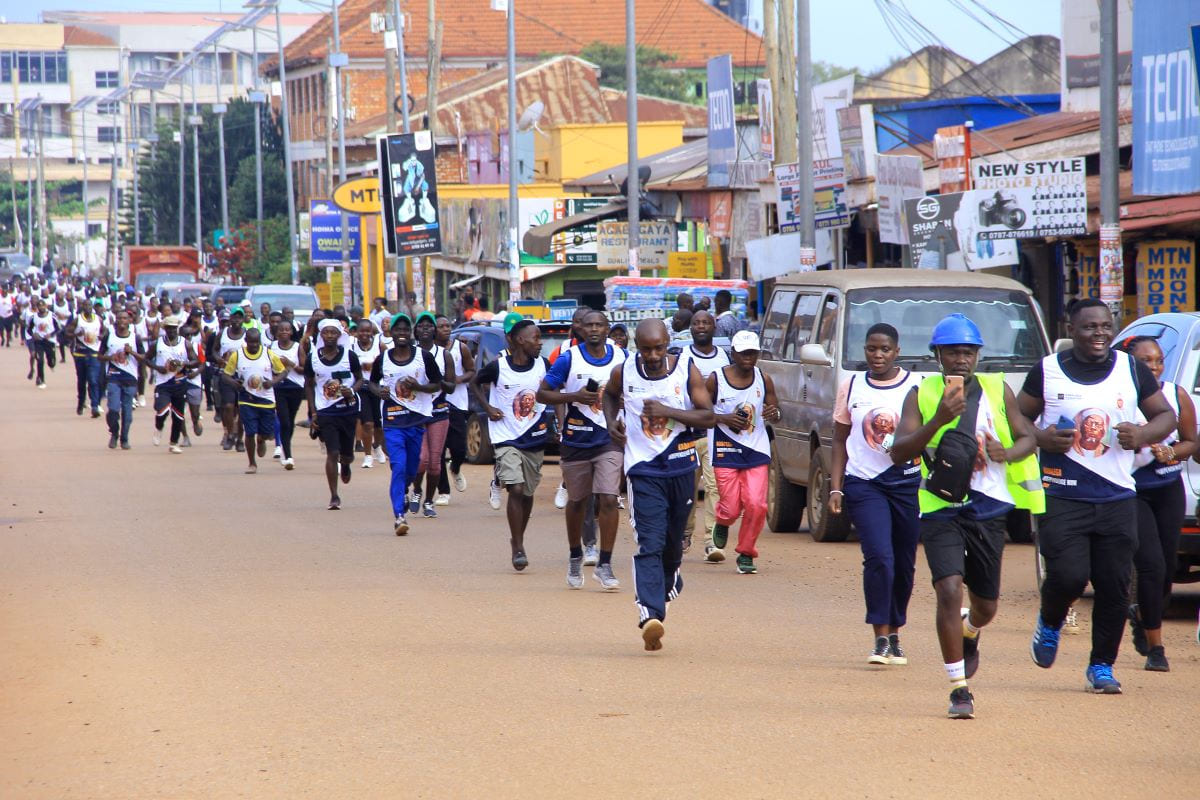 Runners who participated in the Kabalega Independence Run 2025 make their way through the streets of Hoima City.
Runners who participated in the Kabalega Independence Run 2025 make their way through the streets of Hoima City.
The event featured three main race categories — a 2KM family-friendly walk/run, a 5KM fun run, and a challenging 10KM competition that saw professional athletes and local champions competing for top prizes. The route meandered through scenic parts of Hoima City, lined with cheering residents, cultural performances, and hydration stations. From senior citizens and schoolchildren to UPDF personnel and government officials, the diversity of runners symbolized collective ownership of Kabalega’s vision of sovereignty, health, and self-reliance.

The Executive Director – Kabalega Foundation, Dr. James Isagara Kisoro (left) receiving a dummy cheque of 10 Million Uganda shillings from the representative of Bank of Uganda at this year’s Kabalega Independence Run, Dr. Bazinzi Natamba, the Deputy Director – Department of Communications and Corporate Affairs (center), in the presence of his colleague, Owek. Robert Owagonza Abwooli – former Minister of Finance & planning in Bunyoro-Kitara Kingdom.
Opening remarks by Dr. James Isagara Kisoro, Executive Director of the Kabalega Foundation, reminded participants that the run was not just a sporting activity, but a living expression of liberation and transformation, with this year’s edition focused on supporting youth innovation.
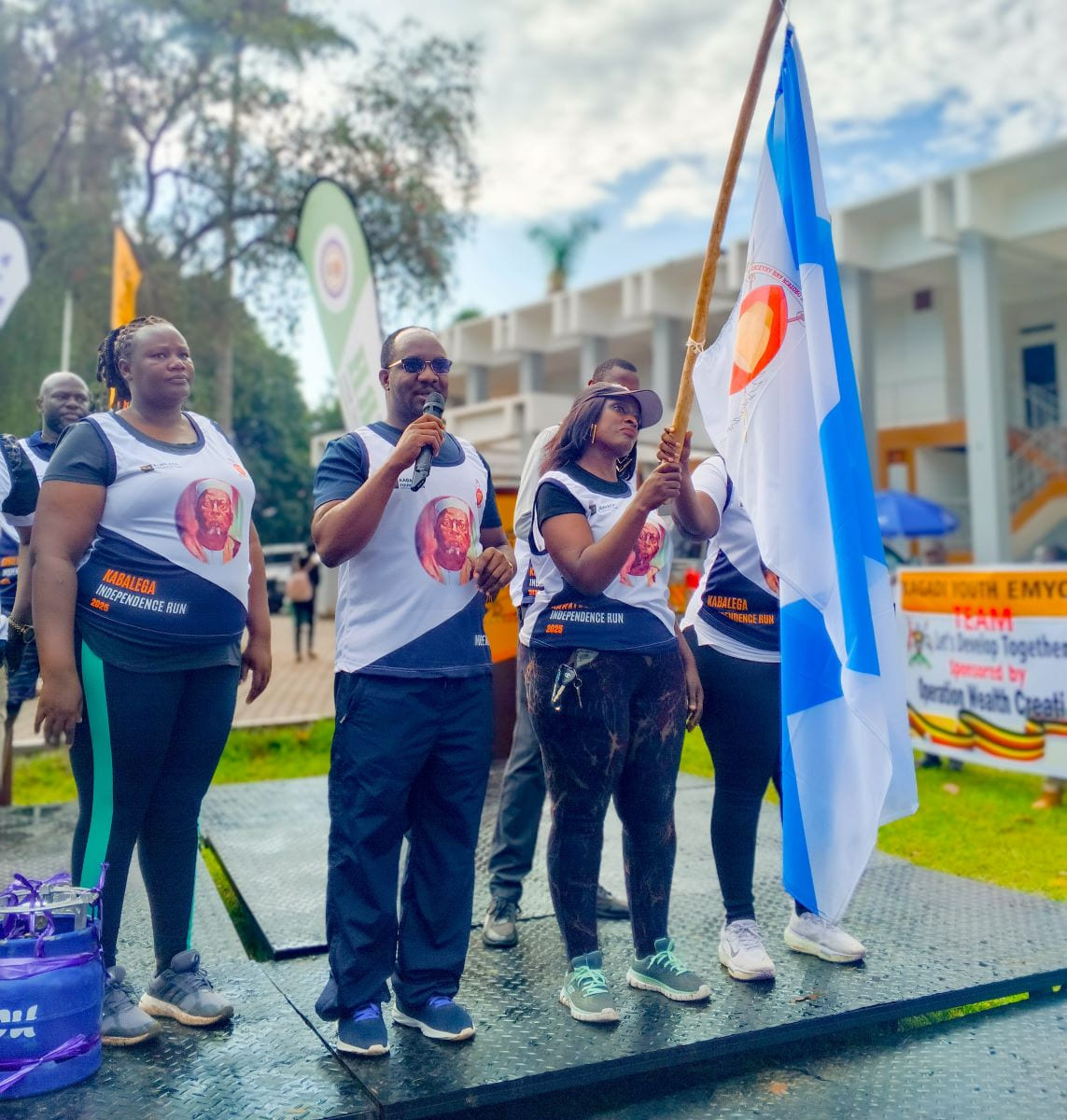
Dr. James Isagara Kisoro (center) delivering his remarks, where he thanked all partners and sponsors, and flagged off the run along with Princesses Daphene (left), Oliver, and Doreen Iguru (right).
Hoima City Mayor His Worship Brian Kaboyo commended the organizing team for integrating health, heritage, and hope into a unifying community activity. Other members of the royal family, notably, Princesses Daphne, Doreen, and Oliver joined Dr. Isagara Kisoro to flag off the run.
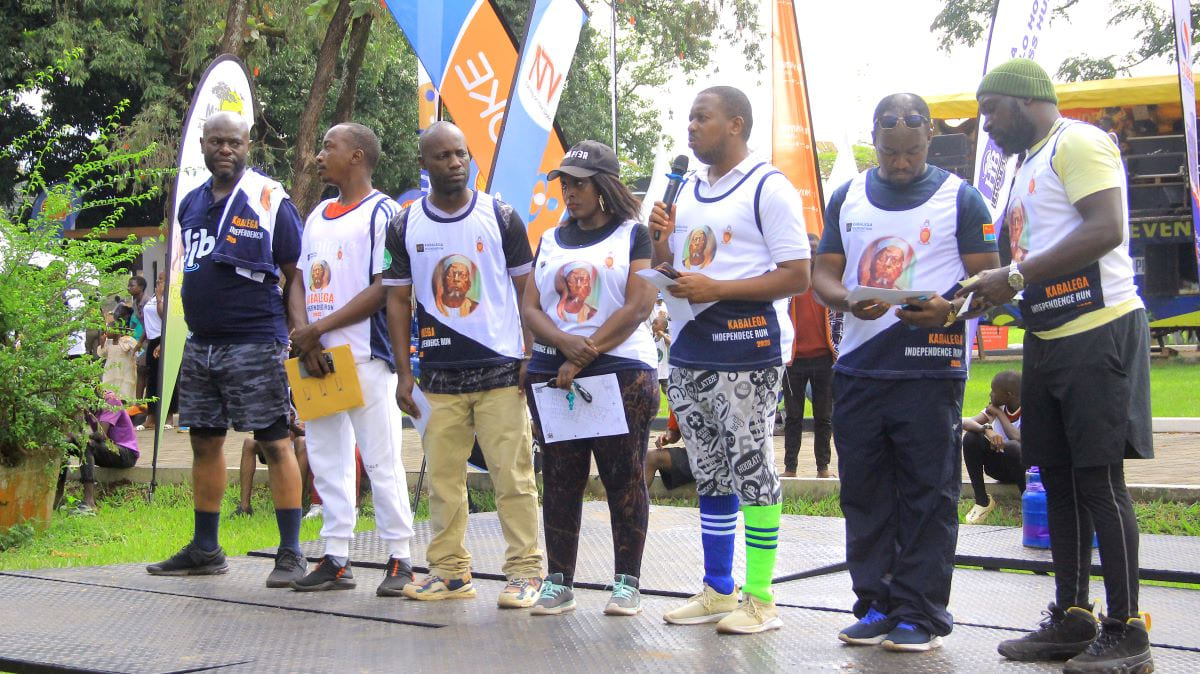
Hoima City Mayor His Worship Brian Kaboyo (3rd right) delivering his remarks after the run at Rukurato Grounds.
Winners of the 10KM category were celebrated with a mix of practical and symbolic prizes. The top male runner received a land title donated by Oilland Real Estates, while other winners walked away with cash, and hampers sponsored by sponsors and partners.

Winner of the 10KM race – Amanya Edson accompanied by his son receiving a certificate of land title from Oilland Real Estates Managing Director – Mr. Jackson Abigaba (left), in the presence of Bunyoro-Kitara Kingdom representatives (2nd and 3rd left), the City Mayor (center back), and the ED of Kabalega Foundation (right).
The atmosphere was festive, celebratory, and inspiring — culminating into remarks from the UPDF regional representatives, and a joint tour of the expo by organisers, the royal family, city leadership, and partners.
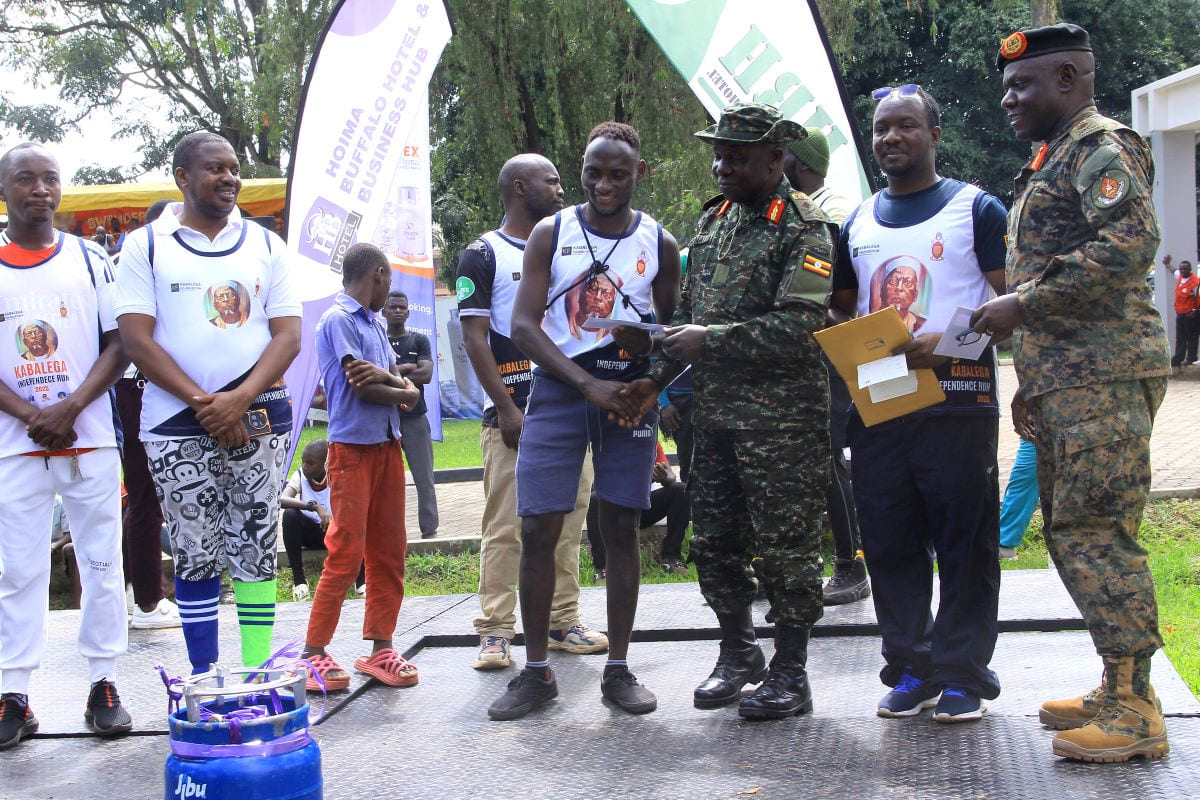
Senior Officers from the UPDF joined the organizers, city leadership and partners in awarding the winners of the different run categories.
Read full story at: https://kabalegaindependencerun.com/
See photo gallery here: https://kabalegafoundation.org/photo-gallery/kabalega-independence-run-2025-gallery/
Towards a Future Rooted in a Legacy of Leadership and transformation
Kabalega Independence Week 2025 was more than a commemorative event — it was a thought platform, a forum, a festival of ideas, and celebration of culture. Through business, culture, leadership, and sport, the week reconnected Bunyoro-Kitara, and participants from across Uganda and beyond to the values that Omukama Kabalega lived and fought for: self-determination, resilience, innovation, and unity. More importantly, it created spaces for a reflection on leadership, and community development that is inclusive, visionary, and anchored in the richness of African identity.

As we look ahead to the future, the spirit of Kabalega continues to inspire a generation of visionaries ready to lead in every realm of society with wisdom from the past and tools of the present.
Story compiled by the Kabalega Foundation Communications Team

